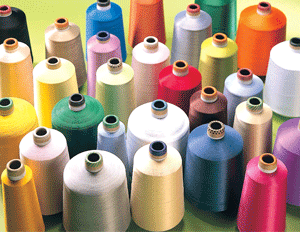
Moisture management of knits from textured yarns
Single jersey weft circular knitted fabrics manufactured from textured yarns of 260% bulk can have good moisture management and air-texturing of polyester yarns improves their moisture transportation capability infer MY Gudiyawar and Manjunath RN.
Single jersey weft circular knitted fabrics manufactured from textured yarns of 260% bulk can have good moisture management and air-texturing of polyester yarns improves their moisture transportation capability, infer MY Gudiyawar and Manjunath RN.
Moisture flow through textiles is an important parameter governing the comfort properties. Human body perspires in two forms-insensible and sensible perspiration-and to be in comfortable state, the clothing which will be worn should allow both the type of perspiration to transmit from the skin to the outer surface.
Generation of metabolic sweat is a natural outcome of a person involved in a strenuous activity. When human skin perspires, the main objective is to lose excessive heat from the body. This excessive heat is mainly lost through evaporation of the moisture from the surface of the skin. Moisture present on the skin surface of a clothed human can often produce uncomfortable sensations such as prickle and wet-cling. Discomfort results from buildup of sweat on the skin and insufficient evaporative heat.
Moisture transport in textile fabrics is one of the critical factors affecting physiological comfort. Thus, in order for clothed human to remain comfortable, the moisture needs to be removed from skin surface mechanically. This is achieved through the use of fibres and fabrics which absorb the moisture and thus remove it from the skin surface [2]. The production of textured yarns stemmed from the need to broaden the area of use synthetic fibres, application of such fibres had previously been limited by the fibres to low hydroscopicity and smooth surfaces which had an unpleasant and glassy sheen.
This article is the result of studies carried out to explore the possibilities of airjet textured polyester yarns in designing the clothing for active wear.
Materials and methods
Material
Polyester (fully drawn yarn): 150 denier with 48 filaments was used for the study.
Methods
Yarn production
Airjet textured yarns of different bulkiness were produced using Himson airjet texturing machine (model: HJT 1000) by varying the overfeed percentage at five different levels. The texturising speed of 300m/min with the stabilising heat temperature of 180¦C and air pressure to jet at 8KgF/sq cm was maintained.
Fabric production
Textured yarns were converted into knitted fabrics using Mayer & Cie circular weft knitting machine at 30 rpm speed. The course & wales per inch of the knitted fabrics were 44 and 30 respectively and the loop length was 2mm.
Testing
The following properties were carried out for flat yarns, textured yarns and their knitted fabrics.
Yarn structural characteristics: Analysed using Carl Zeiss Microscope.
Loop instability & physical bulk: Du-Pont method.
Wicking height: As per German standard DIN 53924.
Drop absorbency: As per AATCC test method TS-018.
Air permeability: Using Air-Permeability Tester as per the standard ASTM D737.
Moisture vapour transmission rate: Using the cup method according to the ASTM E96-66 standard.
Results and discussion
Wicking behaviour of textured yarns
The characteristics of the airjet textured yarns are shown in the Table 3.1. Sample 1 is the untextured flat yarn and samples 2 to 6 are airjet textured yarns at five different overfeed levels.
Airjet texturising causes a significant difference between the wicking height of textured and untextured yarns. Compared to the untextured yarn, wicking height of textured yarns increases with the increase in the overfeed percentage. The increase in wicking rate is due to increase in bulkiness and surface texture (roughness) after texturising. The bulkiness of the yarn is due to increase in interfilament spaces and the roughness on the surfaces is due to the formation of loops during<




